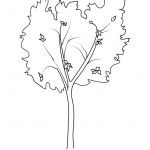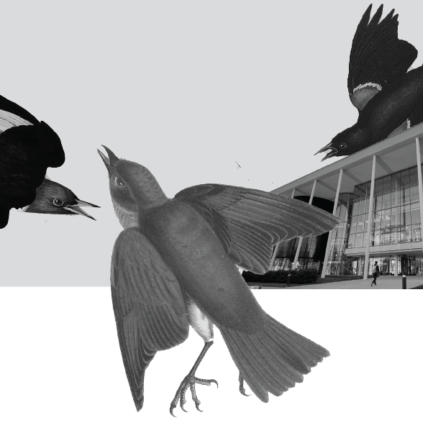
In 1685, William Cooper gave an unusual gift. The poor Hamden farmer uprooted two saplings, specimens of Ulmus americana, the American elm, from his farm and hauled them on his wagon five miles to the budding city of New Haven, where he planted them in front of the church that then stood on the town green. They were the first elms recorded to have been planted in the city.
Nearly three and a half centuries later, the city of New Haven received an eerily similar present. In 2009 and 2010, Deborah Edwards and other members of the Garden Club of New Haven made two trips, presumably not by wagon, to Hamden’s Whitneyville United Church of Christ, where two venerable American elms stand. The club members gathered up seeds and saplings from the trees and hastened them back to New Haven.
But the Garden Club, whose members do civic horticultural work in New Haven, did not intend to donate them to a Puritan minister and his white clapboard chapel. The project that Edwards oversees, “American Elms in New Haven: On its Green and in its Neighborhoods,” has as one of its goals another, perhaps higher, aspiration—to restore the Elm City to at least some of its former glory.
New Haven has had a long and tragic history with Ulmus americana. Late eighteenth-century enthusiasts oversaw the first systematic planting of elms on the Green. Shortly thereafter, James Hillhouse—of Hillhouse Avenue fame—packed the rest of the city with them. By the middle of the nineteenth century, New Haven resembled an exclusive, elms-preferred arboreal club.
But trees are not pillars of stone. In 1838, an infestation of cankerworm caterpillars munched through New Haven’s elm foliage. They continued to do so sporadically in the years that followed. Then, towards the end of the 1800s, elm bark beetles arrived in New Haven and began to eat their way through the trees themselves. New Haven residents desperately tried surrounding the elms’ lower trunks with moats of oil to prevent the wingless cankerworms from gaining access to branches. They later doused the trees with the highly toxic compound lead arsenate to ward off the beetles.
Despite these efforts, the elm population was shrinking. In 1930, the United States recorded its first case of Dutch elm disease, a fungus carried by beetles that is all but certain death to Ulmus americana. In the 1940s, the tree disease struck New Haven, and within a few decades, ninety percent of the Elm City’s eponymous trees were gone.
This is where Edwards’s work comes in, she told me. The elms at the Whitneyville Congregational Church evidently resisted the disease; the seeds gathered there are likely to be disease resistant as well. So Edwards’s project has distributed those seeds, along with some American elm seeds bought commercially and known to be resistant, to some of its members and to local schoolchildren. The members will raise the trees, 131 in all, in what Edwards called “foster care.” Then, in 2013, when the trees are four- to five-foot saplings, they will be transplanted to various New Haven schools, nonprofits, and perhaps residential yards. If New Haven is lucky—which will become evident only after a few decades—the elms will be resistant to Dutch elm disease and will grace the city for centuries to come.
Edwards is not the only expert on New Haven’s elms. When I requested literature on the topic at the New Haven Historical Society’s Whitney Library, the librarian peered at me knowingly through her thick spectacles and then buried me under piles of memorabilia about New Haven’s long-dead trees.
As the number of elms dwindled over the twentieth century, New Haven residents mourned their loss and memorialized their love for the trees. A newspaper clipping from February 5, 1972 lamented the loss of Hillhouse Avenue’s last elm. A book by an early twentieth century resident, self-published and inexplicably dedicated to William Howard Taft, criticized New Haven residents for their failure to take better care of their trees. A bound copy of a Yale term paper from 1986 argued that the Elm City’s trees had suffered most from unnatural calamities, including “leaky gas mains” and the ill-tempered horses of ninteenth-century locals, who had a predilection for wreaking havoc on the trees’ trunks.
In a 2006 piece in the Yale Alumni Magazine, School of Forestry and Environmental Studies Professor Stephen Kellert speculated that we are drawn to Ulmus americana because it resembles the tree species of our primordial birthplace on the African savannah. Walking along the Green on a recent spring day, I tried to imagine it as it looked in the photographs that I came upon in the Whitney Library from the early twentieth century. If Edwards’s seedlings prove hardy, the gritty sidewalk will once again look elegant beneath the towering, gently fluted trees that gave the Elm City its name.


